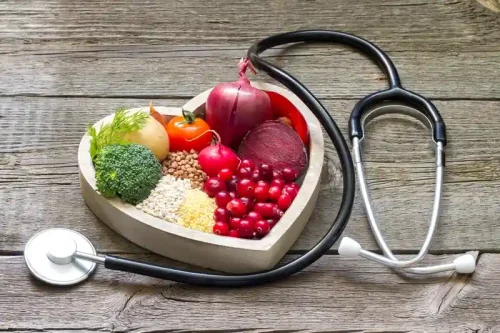- By admin
- In Sober living
Consequences of Alcohol Use in Diabetics

An alternative mechanism has been posited by Wan et al. 118 who reported that chronic alcohol feeding increases the mRNA and protein in muscle for the GTP-binding protein Gs-α, which in other conditions impairs IMGU 137. Furthermore, acute alcohol administration 98 and long-term ingestion of moderate doses of alcohol consumption 113 have been infrequently reported to reduce insulin secretion. Hence, while alcohol appears to inhibit insulin secretion in vitro, its effects under in vivo conditions are more variable and may be model- and/or species-dependent.
Managing Stress to Reduce Atrial Fibrillation Risk in Diabetes
- Exercising 1–4 times weekly reduced costs by 7.6% for males and 7.4% for females compared to non-exercisers.
- It’s also best to have a meal or snack that includes carbohydrates when you are drinking alcohol.
- The study had a number of limitations, however, which might alter the perception of impact.
- We strive to reduce the impact of diabetes on Aboriginal and Torres Strait Islander people living in Victoria.
- Alcohol abuse refers to the excessive and harmful consumption of alcoholic beverages that disrupts daily life and negatively impacts health.
- Thus, whereas type 1 diabetes is characterized by a complete lack of insulin production, type 2 is characterized by reduced insulin production plus insulin resistance.
Heavy alcohol consumption may increase a person’s risk for developing this disease. Interestingly, the risk of retinopathy was independent of the men’s ability to control their blood sugar, suggesting that alcohol may directly damage the eyes or related structures. The two most common forms of diabetes are type 1 and type 2 diabetes, with type 2 diabetes accounting for at least 90 percent of all cases.

One drink =
Alcohol has profound effects on tissue and whole-body fuel metabolism which contribute to the increased morbidity and mortality in individuals with alcohol use disorder. This review focuses on the glucose metabolic effects of alcohol, primarily in the muscle, liver and adipose tissue, under basal postabsorptive conditions and in response to insulin stimulation. While there is a relatively extensive literature in this area, results are often discordant and extrapolating between models and tissues is fraught with uncertainty.
About Medical News Today
Basal in vivo-determined glucose disposal by skeletal muscle, both fast- and slow-twitch fiber types, also did not differ between control and chronic alcohol-fed rats 14. Similarly, in vitro-determined basal glucose uptake did not differ in incubated epitrochlearis muscle isolated from pair-fed and alcohol-fed rats 57. The differences in muscle glucose uptake between acute and diabetes and alcohol blackouts chronic alcohol exposure has been posited to be due to the relatively lower peak BAL achieved in chronic alcohol-fed rats.
Medical Interventions
- Drinking alcohol regularly raises your blood pressure, triglycerides and cholesterol.
- The mechanisms underlying the development of alcoholic ketoacidosis are complex.
- The study underscores the economic impact of health risk behaviors and supports the need for targeted public health interventions.
- Alcoholic beverages are high in empty calories, which can contribute to weight gain and obesity—significant risk factors for Type 2 Diabetes.
- Using a similar model of acute alcohol administration, Spolarics et al. 12 also reported reduced glucose uptake in some muscles (e.g., red quadriceps and soleus), but not others (e.g., gastrocnemius and white quadriceps).
It can also increase total cholesterol, LDL (‘bad’ cholesterol) and triglycerides (a type of fat in your blood). John, a 45-year-old office worker, began drinking excessively to cope with job stress. Over the years, his alcohol consumption led to significant weight gain and the development of insulin resistance. His condition was exacerbated by liver damage caused by chronic alcohol abuse, making diabetes management more challenging.
- In 2020, the National Health and Medical Research Council (NHMRC) recommended that, to reduce health risks from drinking alcohol, healthy men and women should drink no more than ten standard drinks a week and no more than four standard drinks on any one day.
- Alcohol-induced differences in plasma insulin appear independent of a change in hepatic insulin extraction 85.
- Basal glycogen content in skeletal muscle has most often been reported to be unaltered by chronic alcohol ingestion 62,63, but some studies have shown elevated glycogen content 64 in the absence of overt symptoms of alcoholic myopathy.
- Overnight incubation of hepatocellular carcinoma (HCC) cells (i.e., FOCUS) with alcohol blunts the insulin-induced increase in the phosphorylation of the insulin receptor-β subunit, IRS-1 and AKT 125,126.
- If you notice any of these symptoms, it’s time to take a break and check your blood sugar.

In addition, women tend to have more body fat, which tends to retain Halfway house alcohol. Pre-diabetes is a condition where a person’s blood glucose levels are higher than normal but not high enough to be diagnosed as type 2 diabetes. It interferes with the liver’s ability to release glucose, potentially causing low blood sugar, and chronic abuse can lead to insulin resistance and high blood sugar levels. Incorporating a balanced diet rich in whole grains, lean proteins, and vegetables, along with regular physical activity, supports insulin sensitivity and blood sugar regulation.

After seeking help and reducing her alcohol intake, Maria managed to lose weight and improve her insulin sensitivity. With the support of healthcare professionals, she successfully managed her blood sugar levels and reduced her risk of developing full-blown diabetes. Presumably some of these and other inconsistencies in the data result from the use of different cell lines and animal models. For example, the severity of alcohol-induced hepatic insulin resistance is strain-dependent, being more pronounced in alcohol consuming Long-Evans compared to Sprague-Dawley rats 28.

Finally, alcohol consumption can worsen diabetes-related medical complications, such as disturbances in fat metabolism, nerve damage, and eye disease. Modifiable behaviors, such as smoking, harmful alcohol consumption, unhealthy diets, and physical inactivity, significantly elevate the risk of NCDs and impose considerable costs on society, including healthcare costs 1,2,3,4. Using similar animal models and methodological approaches as described in the preceding section, acute alcohol either does not change or decreases basal in vivo-determined cardiac glucose uptake 12,51. Basal cardiac glucose uptake (both atria and ventricle) also did not differ between pair-fed and chronic alcohol-fed rats 14. Similar to skeletal muscle, the data pertaining to the effect of alcohol on basal glucose uptake in heart does not present a consistent picture as to an underlying defect, which may be a consequence of differences in animal models and methodology. Hypertriglyceridemia is an important risk factor for cardiovascular diseases.




